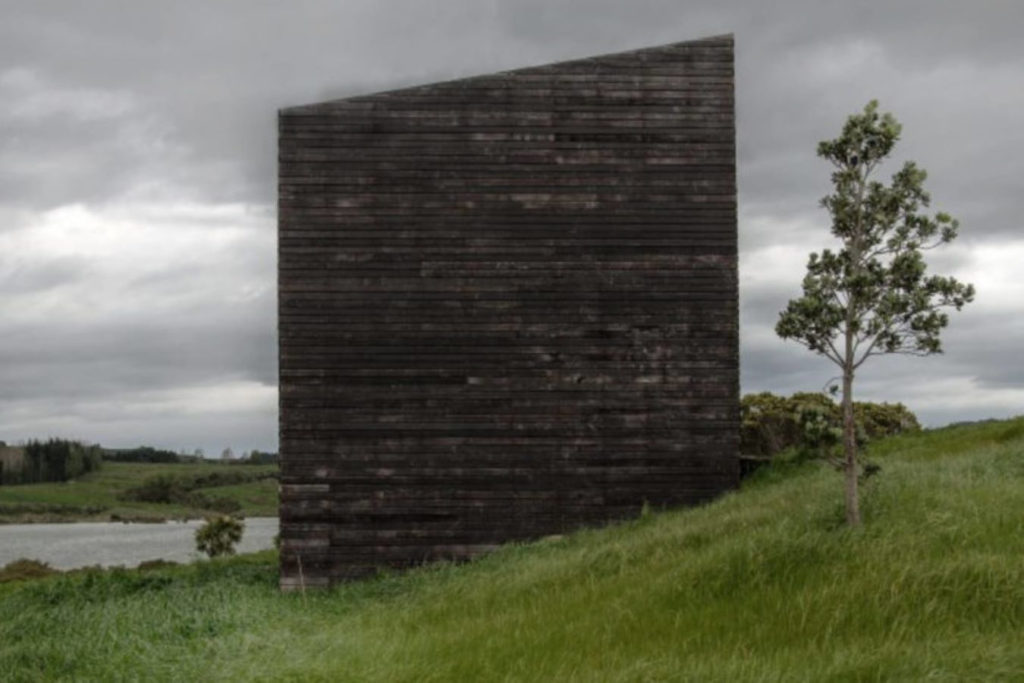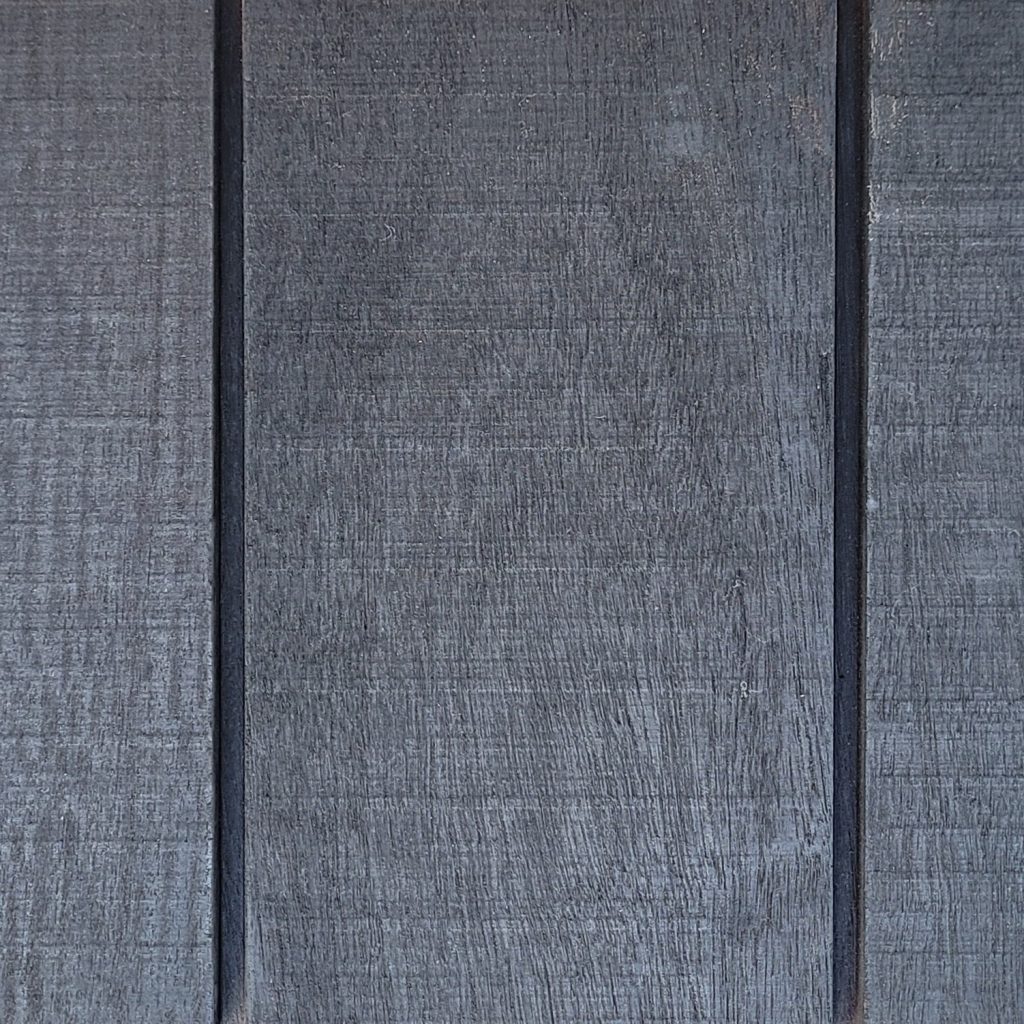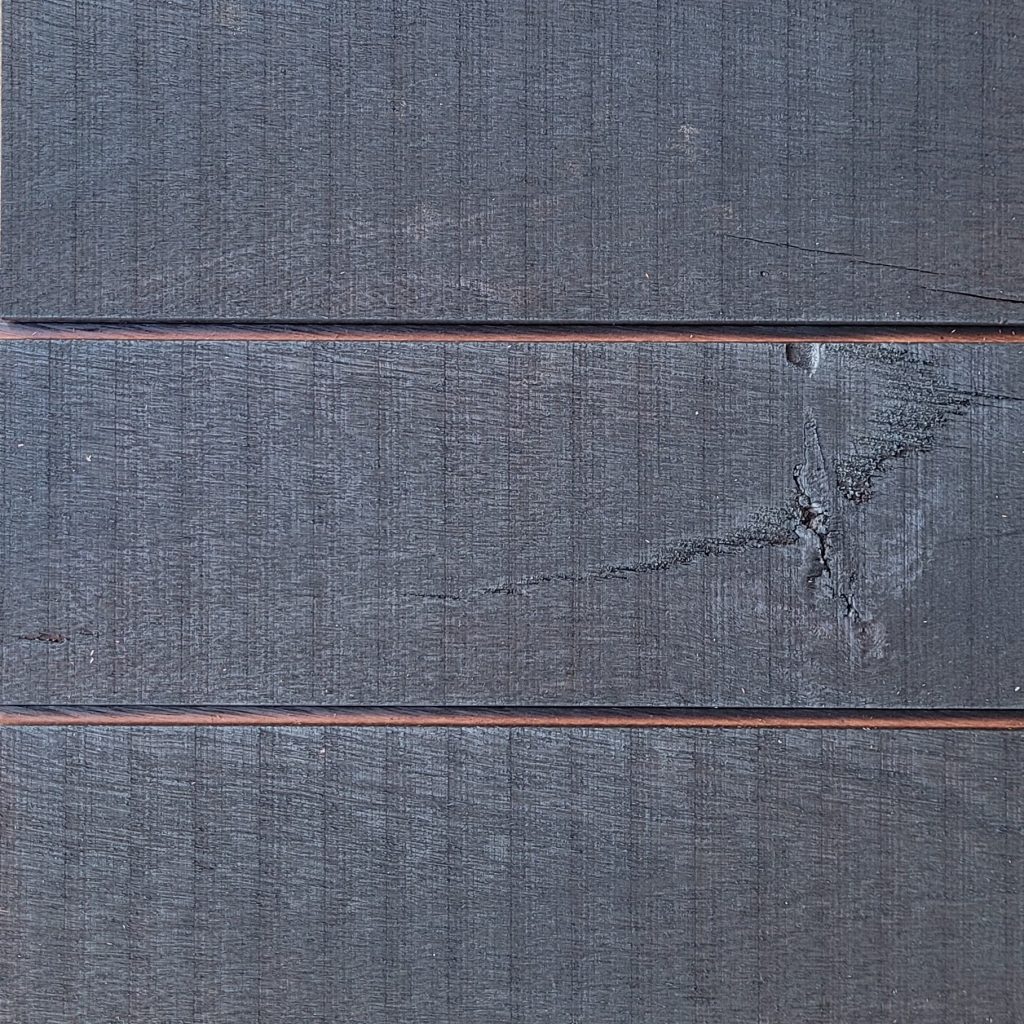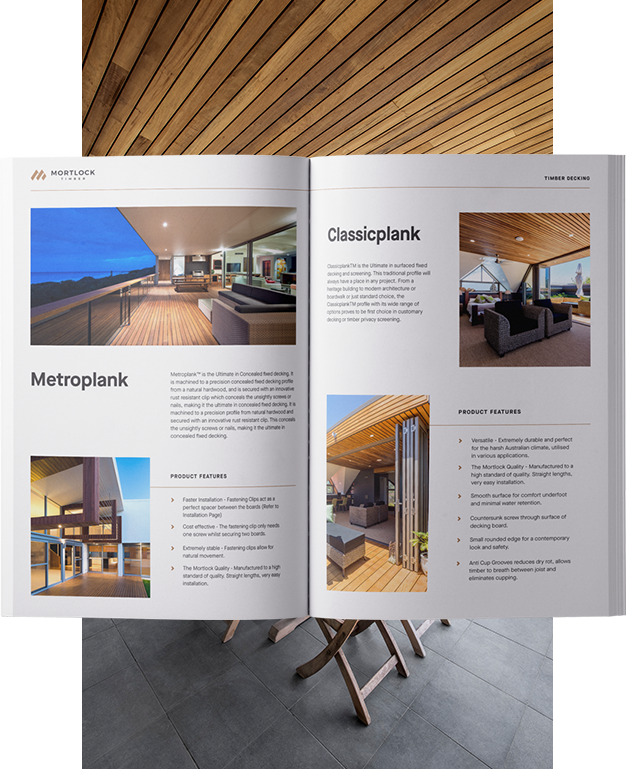Using charred timber? Here’s what to look out for

The heat applied during the charring process can cause boards to warp, affecting the timber’s finish
When heat is applied to timber, it rapidly dries out the surface wood. Uneven drying on one side can make the board cup, compromising the finish and making installation challenging. Applying the charring process on both sides helps maintain an even finish. This means the surface on both sides dries evenly. This aids in maintaining the grain’s natural texture and quality. While some boards might still move slightly, this technique ensures a premium surface, enhancing longevity and durability.
Charred timber provides protection and an appealing finish to the entire board surface. Below is a video demonstrating a board charred on one side versus our charred timber using both sides for an effective finish.
At Mortlock, timber cladding is charred on both sides of the board. To limit movement during this process, Mortlock Timber uses an effective, specially engineered machine to char both sides of the timber cladding board in one pass.
Unevenly charred timber
This unevenness affects the finish, reducing its architectural beauty. Even charring is crucial for the timber’s durability and striking architectural appeal. Uneven charred sections of the timber will weather faster than even charred sections, creating a very ‘patchy’ charred look.
Unevenly charred timber after it has started to weather showing the ‘patchy’ look

Most timber cladding has a shadow line groove separating each board. Failing to char the groove can cause it to weather faster than the board’s surface, leaving a stripey finish. Companies that do not char the groove correctly hide the non charred section with a black coating. Properly charred grooves enhance the building’s overall exterior finish. As it’s not charred this section weathers faster.


Mortlock Timber uses a machine specially designed to char the timber as evenly as possible and char right into the shadow line groove.
Using mixed timber types
While we offer different wood species in our Shou Sugi Ban charred timber range, it’s important to stick to one timber type for your project, unless areas are clearly separated by design.
Different wood species behave differently when exposed to the weather. This is because different timber species behave differently when exposed to weather.
In response to changes in the weather, timber will increase and decrease its moisture content. This means timber, as a natural material, adjusts dimensionally (expands or contracts) with moisture content changes.
Often charred timber is supplied as Australian hardwoods or mixed hardwoods which refers to a mix of species being used for charred timber. Once charred wood is finished, identifying which timber species were used becomes difficult.
For example, an Australian hardwood mix typically consists of Red Ironbark, Spotted Gum and Blackbutt. This diversity in wood species within mixed hardwoods affects the timber’s finish and expansion characteristics. The tangential shrinkage for each of these species is as follows:
- Red Ironbark: 6.3%Spotted Gum: 6.1%Blackbutt: 7.3%
- Choosing the right timber is essential for achieving a sustainable and practical charred wood finish.
Resource: https://www.woodsolutions.com.au/
When installing timber cladding it is important to allow for the correct expansion gap.
To determine the correct expansion gap, you need to consider the following:
- timber type
- the moisture content of the timber
- the equilibrium moisture content (EMC) at the location of your project.
Blackbutt, compared to Spotted Gum and Red Ironbark has different shrinkage rates. Once the timber is charred it is difficult to determine the timber type to ensure the right expansion gap is allowed for. Selecting timber that complements your design enhances both its aesthetic and structural benefits. If the incorrect expansion gap is not allowed for the boards can cup and pop off the substrate when they expand.
Mortlock Timber will only supply your selected wood species, listed on your quote to ensure quality. The supplying of mixed hardwoods which is a cheaper lower-grade product is not a priority of ours.
Understanding the maintenance requirements of charred timber
Let’s be honest: charred timber products do require maintenance to preserve their beauty. Charring timber does not mean it becomes completely weather-resistant. Any timber exposed to the weather will eventually silver out if it’s not maintained. However, charred wood’s preservation as a sustainable material provides great long-term benefits. The benefit of charred timber is its extended durability without frequent maintenance compared to non-charred wood for exterior and interior applications.
Maintenance of charred timber refers to general cleaning and re-oiling of the timber to maintain the unique look that Shou Sugi Ban charred timber offers. Preservation techniques, such as re-oiling, are key to enhancing the timber’s longevity and appearance.
Learn more about how different timber types offer different maintenance levels here.
At Mortlock Timber, integrity is one of our values, so we don’t hide the facts. Our approach focuses on creating practical solutions that balance aesthetic desire with functional benefits. We like to be upfront, so our clients know what to expect when using timber. Mortlock Timber’s testing has shown charred timber cladding can last 7 to 10 years (or longer) with effective maintenance.
Ready to see how timber can transform your next project? Get in touch with us today to see what’s possible!
View our pricing and product guide

We are committed to bringing you timber products that add value and endure for years to come, even in heavy traffic and harsh weather conditions. We understand the value of efficiency when it comes to installation and keeping hardwood timber costs down. That’s why we’ve spent decades perfecting our designs to make them easier to handle, less wasteful and more efficient to install. This efficiency allows us to offer you premier products that are more cost-effective so that you can experience greater savings on timber wall costs, timber ceiling costs, timber cladding costs and timber decking costs.
Download our Pricing and Product Guide for our complete hardwood timber price list including timber decking prices, timber wall prices, timber ceiling prices and timber cladding prices.
